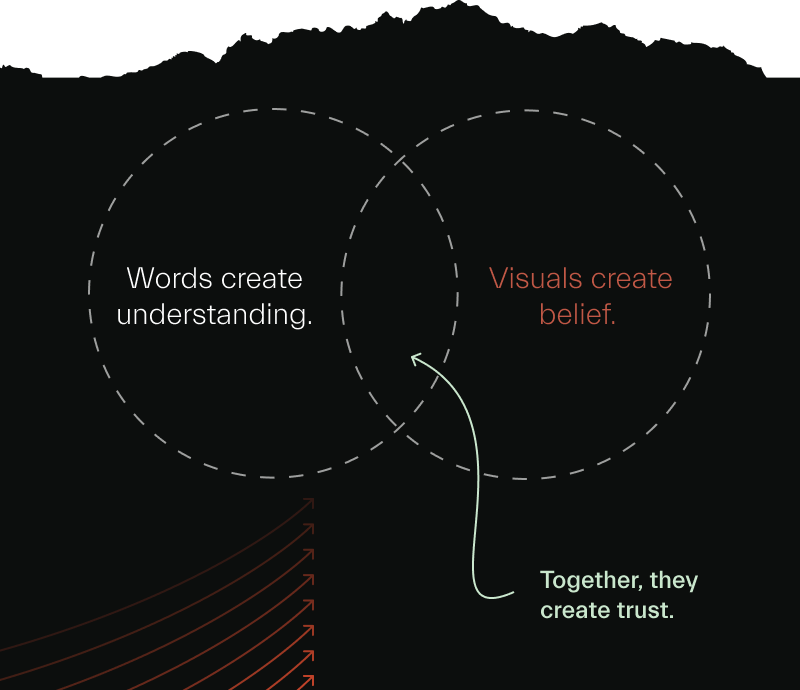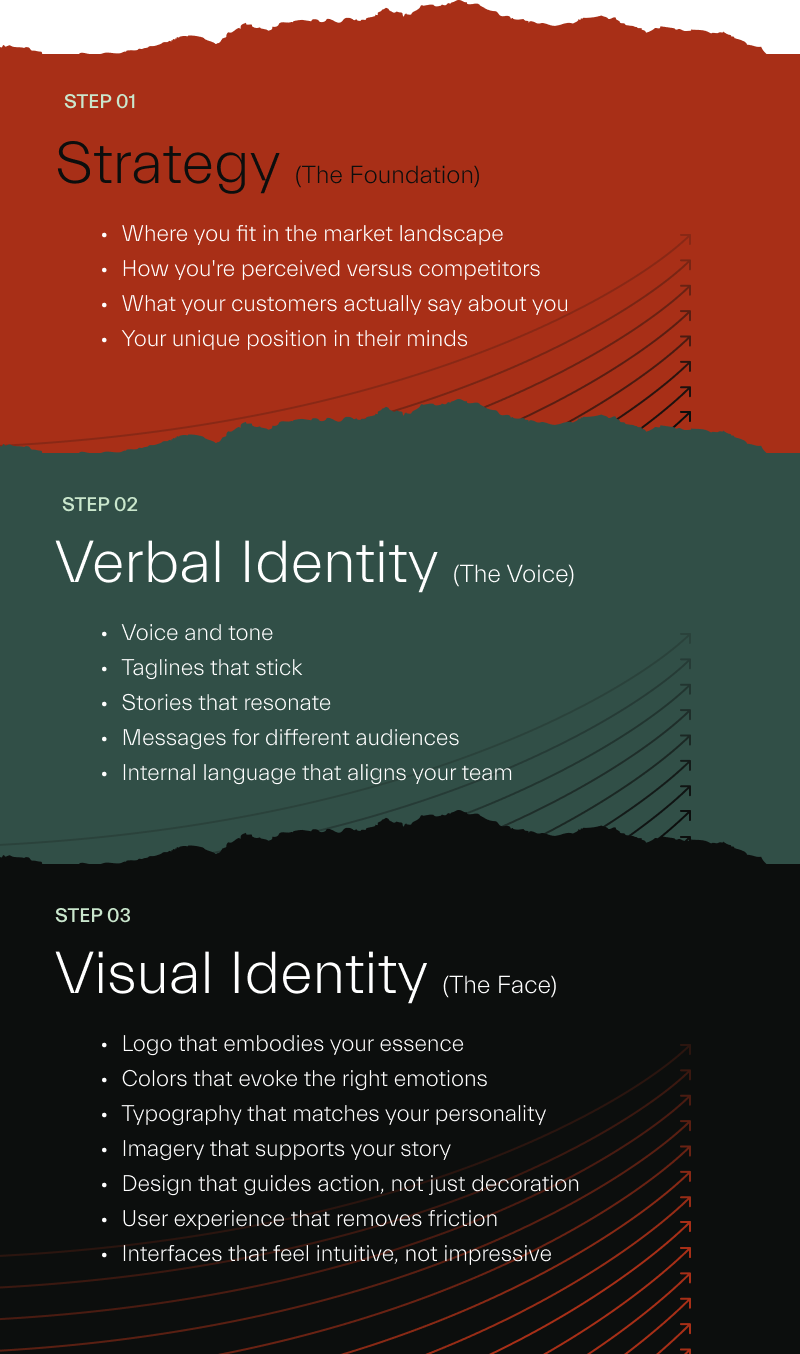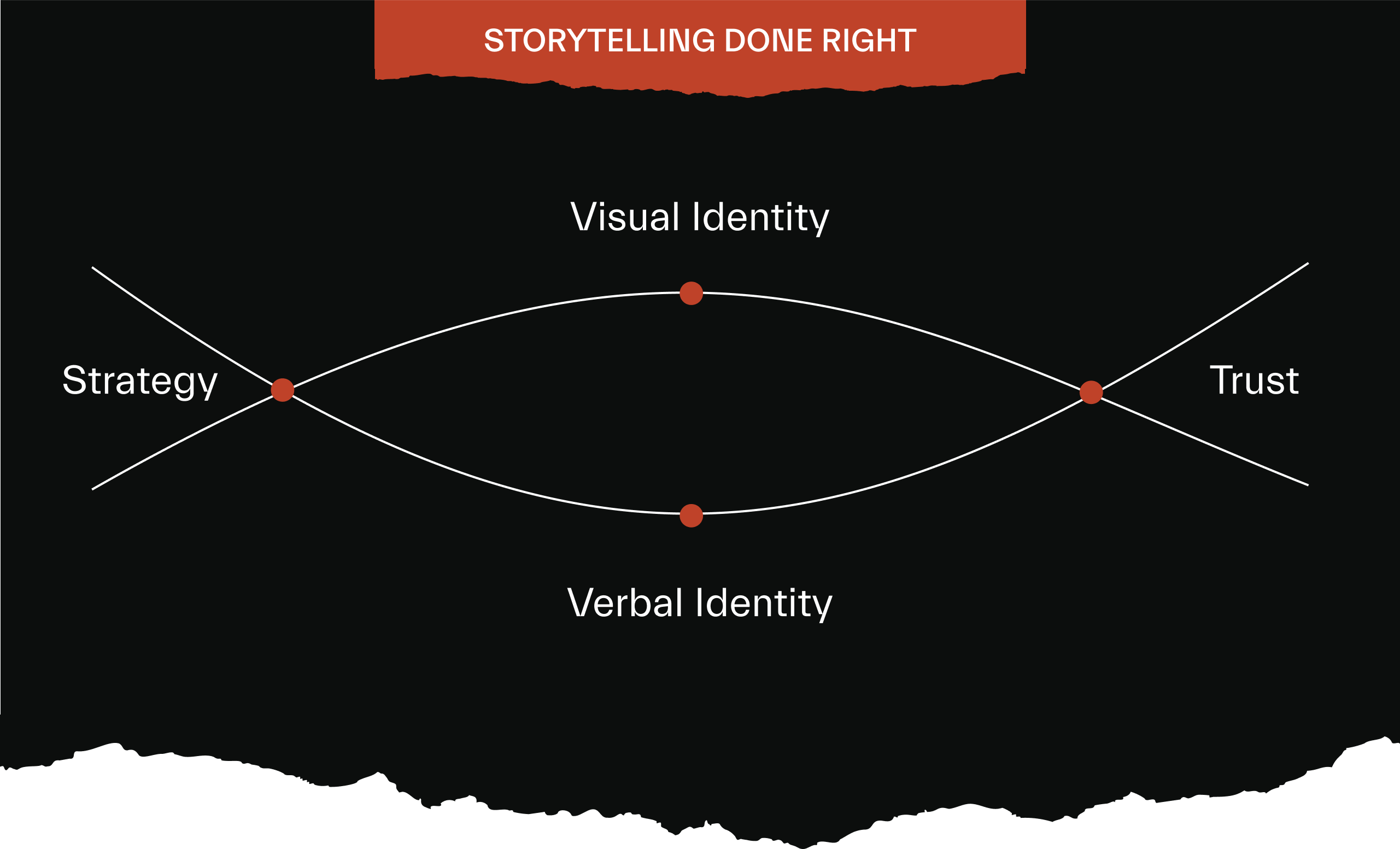You've clarified your message.
You've crafted the perfect sound bites.
You've followed every framework in the book.
Yet customers still aren't engaging the way you hoped.
Here's why: You're only telling half the story.
The Power of Words (But Not the Whole Story)
Donald Miller gets it right when he says words matter. In his popular StoryBrand framework, he emphasizes that businesses lose customers by being vague, confusing, or trying to sound sophisticated instead of clear.
He's absolutely correct. Your brain makes buying decisions in seconds. If customers can't quickly understand how you help them survive and thrive, they'll bounce to your competitor.
Miller's seven sound bites framework is solid:
- What customers want
- The problem you solve
- Your role as guide
- Your simple plan
- Clear calls to action
- Vision of success
- Stakes of failure
These verbal elements are crucial. But here's where the conventional wisdom falls short.
The Other Half of the Equation
Imagine meeting someone who says all the right things but shows up in pajamas to a business meeting. Or a restaurant with a mouthwatering menu description but serves food on paper plates.

Words create understanding. Visuals create belief.
When your visual identity doesn't match your verbal message, you create cognitive dissonance. Customers sense something's off, even if they can't articulate it. Trust erodes before you've even started the conversation.
The Complete Brand Puzzle
Think of your brand as a three-part symphony:
1. Strategy (The Foundation) Your strategy isn't just about what you sell. It's about understanding:
- Where you fit in the market landscape
- How you're perceived versus competitors
- What your customers actually say about you
- Your unique position in their minds
Without this foundation, even the best words and visuals are just pretty decorations on a shaky structure.
2. Verbal Identity (The Voice) This is where Miller's framework shines. Your verbal identity includes:
- Voice and tone
- Taglines that stick
- Stories that resonate
- Messages for different audiences
- Internal language that aligns your team
3. Visual Identity (The Face) Working hand-in-hand with your words:
- Logo that embodies your essence
- Colors that evoke the right emotions
- Typography that matches your personality
- Imagery that supports your story
- Design that guides action, not just decoration
- User experience that removes friction
- Interfaces that feel intuitive, not impressive
Visual identity isn't about making things pretty. It's about making them work. The most beautiful website fails if customers can't find what they need. The most elegant design falls flat if it confuses rather than clarifies.
Your visual identity should do the heavy lifting—guiding eyes to important information, making next steps obvious, and creating an experience so smooth that customers don't have to think. When design serves function, trust follows naturally.
Miller points to Amazon as proof you don't need a beautiful website to succeed. He's right—but look closer. Amazon's "ugly" design is actually brilliant UI. Every element serves a purpose: reviews build trust, specifications confirm fit, comparisons reveal value. The design isn't pretty, but it's profoundly helpful.
That's the point. Effective visual identity doesn't decorate—it delivers. It architectures experiences that make buying easier. Whether through beauty or brutal efficiency, great design solves problems. It guides customers to what they need, when they need it.
Your visual identity should do the heavy lifting—making next steps obvious and creating an experience so smooth that customers don't have to think. When design serves function, trust follows naturally.

These aren't sequential steps where one matters more than another. They're partners in a marriage. When they work together, magic happens.
Why This Matters Now
In our scroll-and-swipe world, you have milliseconds to make an impression. Your customer's brain is processing both words and visuals simultaneously, making split-second judgments about whether you're worth their time.
A compelling message in Comic Sans won't be taken seriously. A beautiful design with vague copy won't convert. Neither will succeed without strategic foundation.
The Path Forward
Start with strategy. Before you write a single tagline or choose a color, understand:
- Your competitive landscape
- Your audience's actual needs (not what you think they need)
- Your unique value in their lives
Then develop your verbal and visual identities together. Let them inform each other. Test them against your strategy. Make sure every element works toward the same goal: making it crystal clear how you help customers win.
Your Next Move
- Get an outside perspective on your brand strategy.
Schedule a 30-minute strategy session with a Strategic StoryBrand Consultant. Fresh eyes can spot opportunities and gaps you're too close to see. These complimentary sessions help you understand where your brand stands and what's possible.
- Audit your success stories right now.
Open your website. Where are your customer transformations? If they're buried on page three or missing entirely, you're hiding your most powerful selling tool.
Here's the truth: A single before-and-after story builds more trust than a hundred feature lists. Your prospects don't care about your capabilities nearly as much as they care about results.
Social proof isn't an add-on. It's the evidence that your words and visuals actually deliver.
The Bottom Line
Your customers deserve the full experience. They need words that resonate AND visuals that reinforce. They need proof that others have walked this path successfully.
Because in the end, growing your business isn't about choosing between clear messages or compelling visuals. It's about creating a complete brand experience that moves people to action.
The question isn't whether you need better words or better design.
The question is: Are you ready to give your customers the complete picture they need to choose you?
Ready to build a strategy-led brand that attracts your ideal customers? Start with a free 30-minute strategy session to understand where you truly stand in your market. The rest will follow.




.jpg)




